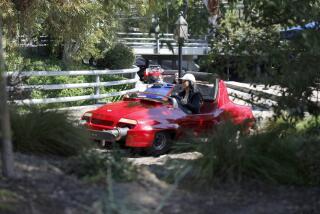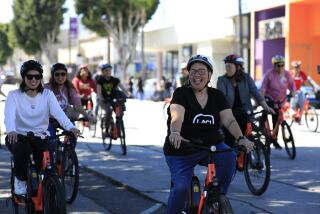More for Your Money: Sign on, plug in and enjoy
The economies in France and Spain are in turmoil, but there are positive changes in those countries this year that will affect the traveler, especially one on a budget.
In France, a new electric-car-share program called Autolib’ (www.autolib.eu, in both English and French) is designed to function much like the city’s successful Velib’ bike-share program. Eventually 3,000 electric cars will plug in at 1,000 (mostly underground) stations — and yes, Americans and Canadians can rent one as long as they have an International Driving Permit.
The cars can be rented in one-year (144 euros, about $190), seven-day (15 euros, or about $20) and one-day (10 euros, or about $13) increments; additional charges apply for the time you have the rental, which can be used only in Paris and environs.
By June, the service is projecting that it will have more than 1,700 of the Bluecars and 1,100 Autolib’ centers, which will be staffed 12 hours a day.
If you choose public transit, always an economical way to travel in Paris, note that it is becoming more automated, which means you may need to carry coins or small bills of 20 euros or less. Why? Staffed ticket windows in Métro stations are gradually being phased out in favor of ticket machines. Many U.S. credit cards don’t work in those machines, so you’ll need to have cash.
Beginning in May, you’ll have a new way to make a pilgrimage to one of the country’s most popular sights — the island abbey of Mont St. Michel. Visitors will park in remote lots and ride free shuttles to a pedestrian walkway connected to the island.
It’s part of a multiyear project to replace the island’s old causeway with a sleek, modern bridge, allowing water to circulate around the island once more.
At the nearby D-Day beaches in Normandy, the Utah Beach Landing Museum (near Sainte Marie du Mont, https://www.utah-beach.com) is now open. It’s built in the sand dunes around the remains of a German bunker, with floors both above and below sea level. Its finale is a large, glassed-in room overlooking Utah Beach.
In the Dordogne, a new Prehistory Welcome Center has joined other worthwhile Cro-Magnon sights in Les Eyzies-de-Tayac. The free welcome center provides a solid introduction to the Dordogne region’s important prehistoric sites, with timelines, slide shows and exhibits that provide an excellent primer on the origins of the human species.
Next door in Spain, the Madrid Card sightseeing pass (lat.ms/yFMNGF) now allows you to skip the lines at sights — which can save lots of time at the famous Prado art museum and the lavish Royal Palace.
And in Barcelona, you can avoid the lines for the Picasso Museum by reserving an entrance time and buying your ticket online with no additional booking fee at https://www.museupicasso.bcn.cat.
Granada’s top sight, the magnificent Alhambra fortress, has opened an official bookstore in a handy city-center location (between Plaza Isabel la Catolica and Plaza Nueva). The bookstore’s info desk can help you print out your reserved Alhambra tickets and sells advance tickets (but not same-day tickets).
With your ticket in hand, you can bypass the mob scene at the main entrance and enter the Alhambra through the Justice Gate (closer to the top attractions of that exquisite palace).
In Seville, the once nondescript square called Plaza de la Encarnacion (at the north end of downtown) has been redeveloped: A gigantic undulating canopy of five waffle-patterned, mushroom-shaped, 100-foot-tall structures (called “Metropol Parasol” by its German architect) now provides shade for the formerly sunbaked square.
More to Read
Sign up for The Wild
We’ll help you find the best places to hike, bike and run, as well as the perfect silent spots for meditation and yoga.
You may occasionally receive promotional content from the Los Angeles Times.






